050: Letter of Recommendation
Virginia Woolf's green purse, a rainy day with Mira Nair, Eka's dresses that float and more.
This weekend I was looking through ‘Manus x Machina: Fashion in an Age of Technology’, a book published in 2016 by the Metropolitan Museum of Art as part of the Costume Institute’s exhibit of the same title, and came across an image of Issey Miyake’s Flying Saucer Dress from the Spring/Summer 1994 collection. It had the appearance of paper lanterns of multiple colors stacked atop one another. According to the Costume Institute, where the dress now holds residence, Miyake’s “lanterns” can be compressed or extended or completely flattened. I’m so fascinated when designers create clothes that at first glance seem ludicrous and totally incongruous for practical living, only to reveal that they are very much intended for the rigors of life and living, clothes that have a good sense of humor and are deceptively practical.
While I was lingering over this image, my mother looked over and told me it reminded her of a dress she had to wear for a school play in which she had the role of a flower. At that time she and her sister were attending Bousfield Primary School, which once used to be the site of Beatrix Potter’s childhood home before it was destroyed in the Blitz. As a child, I had the strongest affinity for the stories of Beatrix Potter, and when we were moving from our home in Croydon to Bangladesh, a dear family friend gifted me with The Complete Tales of Beatrix Potter, which I still have. I also had and still have a Peter Rabbit dinner plate and cup, the latter which I was shocked to find my mother using as a measuring cup.
For her role as a flower, my grandmother was tasked with making a skirt with colorful sheets of tissue paper, crushed and folded to look like flowers. The play was about to begin and everyone but my mother was ready; she was waiting for her parents to arrive with her skirt. Down to the wire, my grandfather rushed in, flower skirt in tow. My grandmother had gone into labor and was at the hospital, hence the delay. Stories like these from my parents are rare gems, and later I thought about how the Flying Saucer dress triggered a beautiful memory I would’ve otherwise not known. I thought of my grandfather, who had no doubt been torn between where to be – hospital or school play – and finding it in himself to be there for his daughter.
It’s remarkable how closely connected things in life are, more than they appear, which is a good idea hold on to whenever one finds life’s beauties fading.
Books
A few recent reads I’ve had a difficult time putting down:
A Moment’s Liberty: The Shorter Diary by Virginia Woolf
This book is an abridged version of The Diary of Virginia Woolf, though at 503 pages it is anything but short. I stumbled upon this book at Black Cat Books in Shelter Island, which has been around since the early nineties. The shop is bordered to one side by the owner’s home where he lives with his wife, and some of its few windows look out onto the English garden they’ve cultivated and a fenced-in vegetable patch to the rear. One time, as I was checking out a few books, the owner told me that he had deliberately placed the books about gardening and wildlife under and along a window which frames the garden, and how a rose bush originally belonged to his wife’s grandmother. Certainly not the kind of story you’ll hear on Amazon marketplace.
Woolf was a wonderful diarist, and I love to learn about the interior lives of people separate from their work. An entry from Saturday, 16 January, 1915 reads, “My writing now delights me solely because I love writing and don’t, honestly care a hang what anyone says.” Her entries are peppered with purchases, little treats for herself, including a dress bought the previous day which she wears the following morning to write in, and apricot-colored coat, and this lovely entry from Monday, 25 January, 1915, on the occasion of her thirty-third birthday: L. had sworn he would give me nothing, and like a good wife, I believed him. But he crept into my bed, with a little parcel, which was a beautiful green purse.
Our Strangers by Lydia Davis
With the publication of Our Strangers, Davis expressly made the choice to sell her collection of short stories only at independent bookstores (I bought mine at McNally Jackson), libraries, and on Bookshop.org. The opening statement further reads, “She is concerned about Amazon’s dominance in bookselling and wishes to see book-lovers return to the place where books have been sold with care and thoughtfulness for centuries by dedicated fellow book-lovers – the corner bookshop.” For me, there is no retail experience quite like being in a bookshop.
I have stretches when I can’t concentrate on a great paragraph and reading a novel is out of the question; Lydia Davis is a great comfort in those moments. Each short story ranges from a few lines to a handful of pages, and before you know it, you’ve devoured half a book after not being able to read for months. The story Just a Little is five lines and reads:
Aftermath by Rachel Cusk
A Life’s Work: On Becoming a Mother is a book by Rachel Cusk I have returned to now three times. When I first began exploring the idea of potential motherhood, I wanted to read something frankly relatively ugly about the subject. Cusk in no way handles motherhood in an ugly fashion, though many thought so after the book was first published. I was a bit tired of seeing editorialized depictions of motherhood online or stories captioned along the lines of, “My child is driving me crazy ha-ha! but I love them ha-ha!” My own childhood in relation to my motherhood was neither, at times abundant and at times painfully complex. And so cusk delivered.
I picked up Aftermath at McNally Jackson a few weeks ago after I realized that I had sought out books that intersected with many of my own life experiences, I’d even read (and re-read) a book on the color blue, but I’d never read something that deliberately dealt with marriage. So of course, I had to read Cusk’s memoir about her divorce, because as is the case with motherhood, marriage is something we’re not publicly allowed to get ugly about. Though reviewers and readers pointed to this book as a stain on the sanctity of marriage, I found it to be quite singularly about her own experience and her mental in the midst of the fallout. If you enjoy Elena Ferrante’s controversial protagonists, you’ll enjoy this.
Brands:
A new principle I’ve set for myself is if I do buy something brand new, it’ll be from an independent and it’ll be something I’ll cherish forever. In the meantime, I’ll be singing their praises.
Eka
Rina Singh, the great mind behind Eka, is one of the few designers who approaches sustainability not as a marketing ploy but as a system that operates from the roots up. When I wrote about the brand for FASHION in 2019, Singh shared with me just how their sustainability framework operated, from the artisans in West Bengal who created the increasingly rare hand-woven Jamdani to wages paid. I purchased one of my first Eka pieces, a breezy pink linen checkered dress, during a stifling New York summer, exasperated by endless offerings of clothes elsewhere that simply do not breathe. There’s a small subsect of designers predominantly hailing from India, Japan, and Italy who think of clothes not only as things to be admired, but to live up to the demands of one’s life.
For Eka’s Spring/Summer 2025 collection (campaign below), titled ‘Amer’, hand-painted watercolor floral motifs were transferred into hand-carved blocks. Of the many ethereal pieces, I am specifically dreaming of the linen Monaco coat, its pattern created from 17 different hand blocks, and the cotton and silk Viola dress, which features hand-cut embroidered inserts. Just writing that was such a sweet seduction!
Apuntob
Designer Sara Lanzi’s decision to close her business last year left a cotton-poplin hole in my heart, but thank goodness for Aputonb, founded by the Rome-based designer Barbara Garofalo. Apuntob has been around since the early nineties and is a mainstay at La Garçonne. I’m swooning over a pair of chalk-colored crunchy crisp cotton gabardine trousers with curved legs, my silhouette of choice, and a silk and cotton pale yellow full skirt with subtle stripes.
Lauren Manoogian
On an unseasonably hot day last week, I entered the impossibly cool and serene Lauren Manoogian store for a respite from the heat. Simply being in there is a nervous system reset: the soothing scent of incense; the calming interiors; the exceptionally lovely and knowledgeable associates working there. I tried on the Cinch pants, made from sun-dryed cotton, a technique which produces a crinkled effect. The cuffs have ties so that the legs can be worn wide or cinched. As someone who has an aversion to pants, particularly in warmer weather, I was surprised by how drawn-in I was by them. I week later, I’m still thinking of them.
Black Crane
A few weekends ago, motivated by the desire to touch materials instead of staring at things on a flat screen, I popped into Oroboro, a delightfully soothing shop just a stone’s throw from the circus of Soho’s Broadway. Though I’ve become a bit of a curmudgeon when it comes to online shopping, I have to say that Oroboro’s product images are beautifully dynamic, giving customers a sense of what clothes can look like when given life, clothes that on other sites look limp and lifeless.
A piece that really stood out to me was a brilliant blue sailor top by Black Crane. What I love particularly about it is just how sharp the edges of the collar are against its relaxed form. Though not available at Oroboro, the brand sells voluminous culottes in the same shade on their site that look delightful paired with the sailor top.
Black Crane was founded by LA-based (where the clothes are also made) Momo Suzuki and Alexander Yamaguchi; the clothes are made from biodegradable and renewable fibers and given there vibrancy using low-impact dyes. A hundred years ago I did a photoshoot, and while I was sweating profusely in a satin slip skirt, the photographer was virtually floating in a roomy dress. When I asked her the brand, she replied, “Black Crane”
Films
First-time views and rewatches that have a special place in my heart:
The Piano by Jane Campion
I listen to the McQueen soundtrack composed by Michael Nyman quite a lot, and had read about how much the late Alexander McQueen loved Nyman’s work, in particular his music for Campion’s The Piano. McQueen was so moved by the film, that for his Fall/Winter 1997-98 collection ‘It’s a Jungle Out There’, McQueen collaborated with jewelry designer Shaune Leane to create silver prosthetic finger ornaments as an homage to the film, and is now part of The Met’s Costume Institute.
An acquaintance who works at Dries Van Noten shared with me that the designer’s Spring/Summer 1999 collection was also inspired by The Piano. An extract from the “Dries Van Noten 1-50” book reads: “‘The starting point for the collection was the scene in the film where Ada (Holly Hunter) is pulled out of the sea by a cord around her ankle. When she comes out of the water, her clothes cling to her body,’ Dries says.” In an interview with Janet Patterson, the costume designer for The Piano and Bright Star, also by Campion, Patterson talks about how she owns the books about Dries Van Noten’s first one hundred shows and marvels at his work. What a full circle moment! My own favourite scene is when a very young Anna Paquin does cartwheels across a beach wearing a white petticoat and matching bloomers.
News From Home and Toute Une Nuit by Chantal Akerman
News From Home is an incredible visual representation of New York City. Filming took place during the two years Akerman spent in New York, between 1971 and 1973, when the director was between the ages of twenty-one and twenty-three. I think it speaks to Akerman’s profundity to see something in New York at such a young age that many of us have difficulty discerning having spent lifetimes in the city. More than fifty years later, some areas have become unrecognizable, while so much has been frozen in time.
Toute Une Nuit reads like an ode to both the agony and the ecstasy of love. Many films deal in the extremes of love, but few meditate on its in-betweens, the moments for when there are no words. Akerman had an extraordinary gift in revealing the beauty in the seemingly mundane and to rethink life’s quiet moments as anything but such.
Monsoon Wedding by Mira Nair
I return to Monsoon Wedding at least once a year, usually when it is bitterly cold or when I am missing the suffocating closeness of my expansive family spread out across the world who would convene every few years for the weddings of my mother’s youngest siblings. Cinematic summers are typically light and breezy and the heat never lingers. Nair captures the density of the sticky and oppressive South Asian summers, the summers of my childhood, made stifling by generations of secrets and resentments that in close quarters bubble over and explode.
A fun fact about the director is that her son is New York Mayoral hopeful (!!!) Zohran Mamdani!



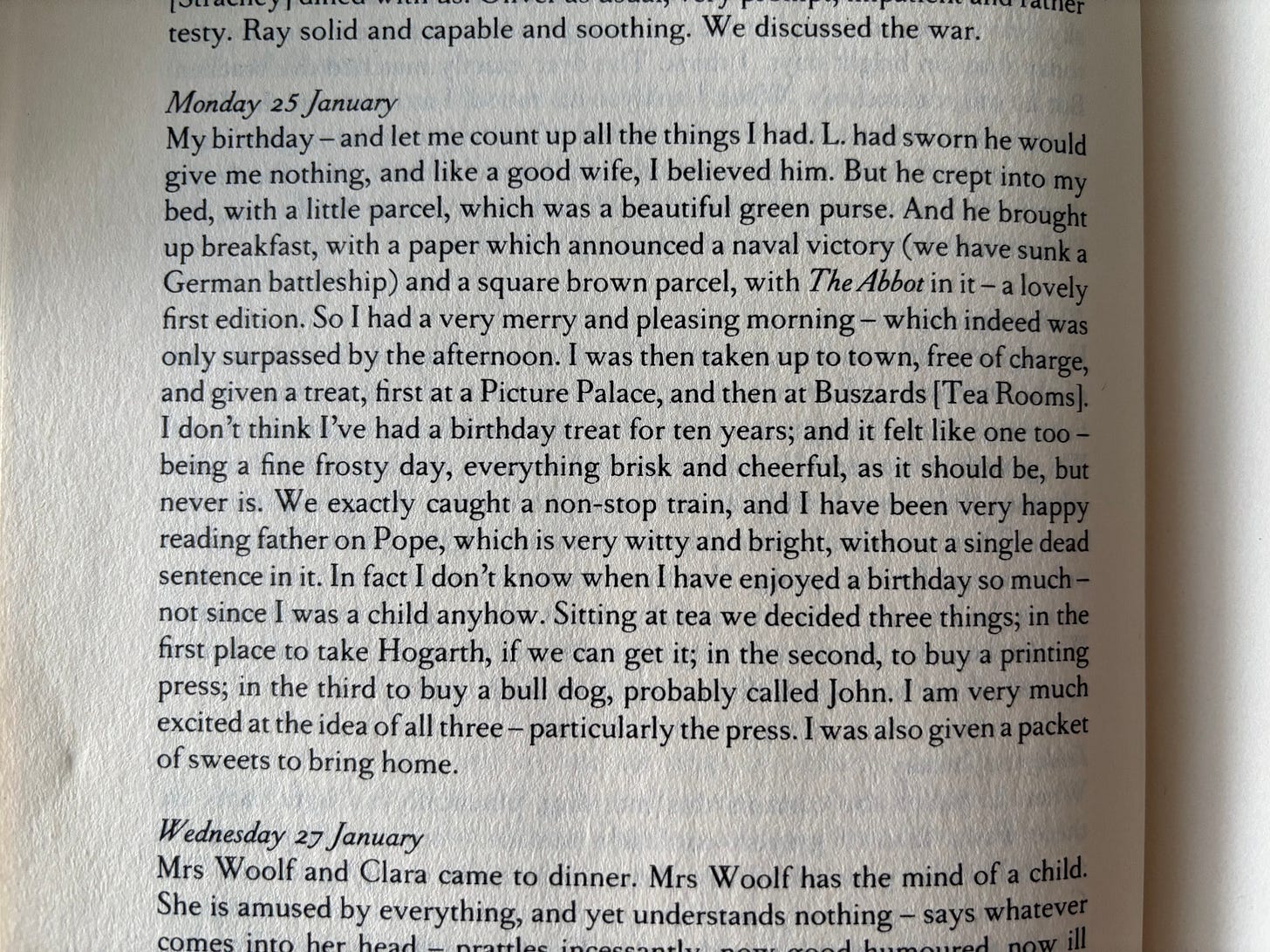
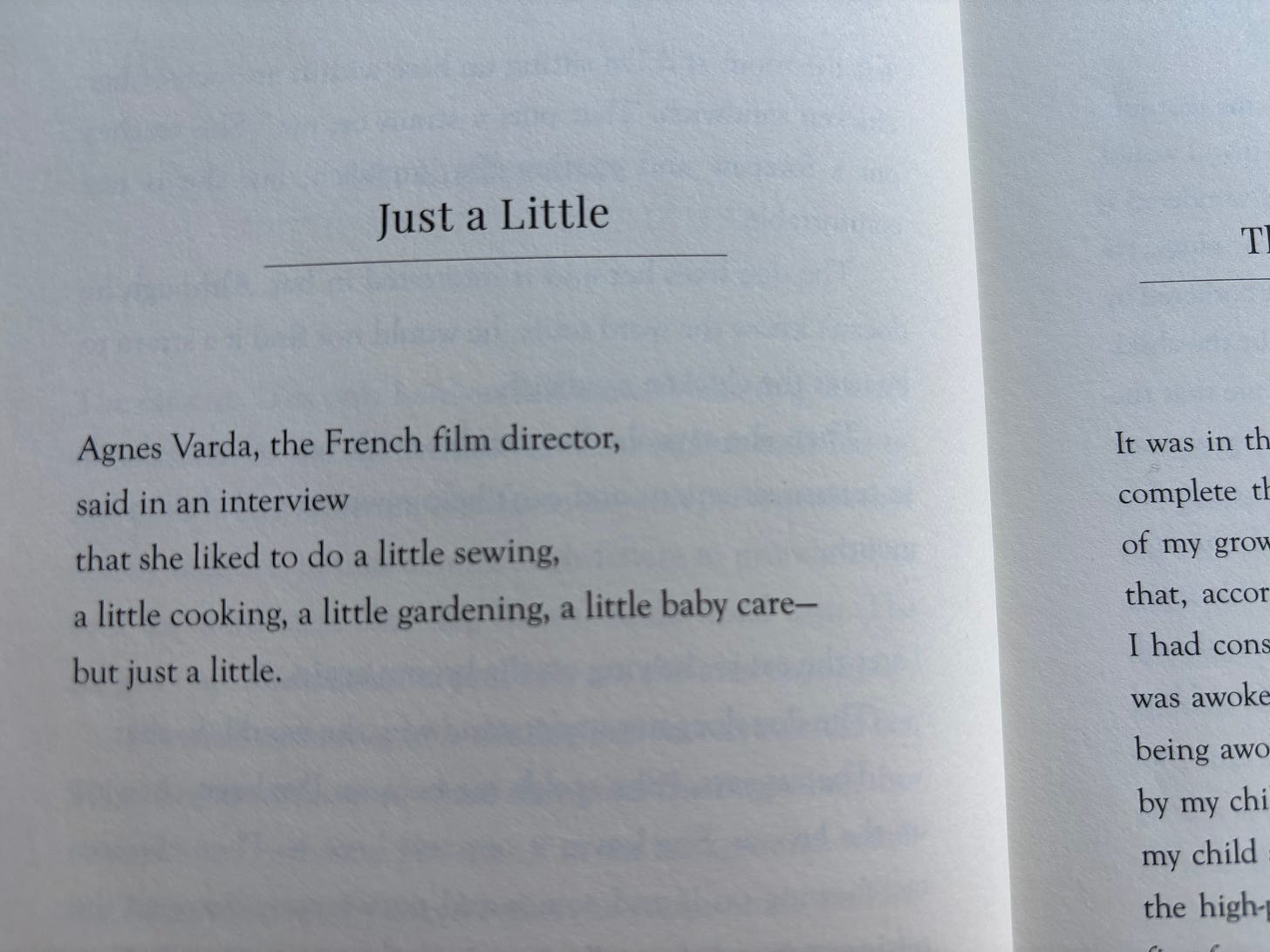

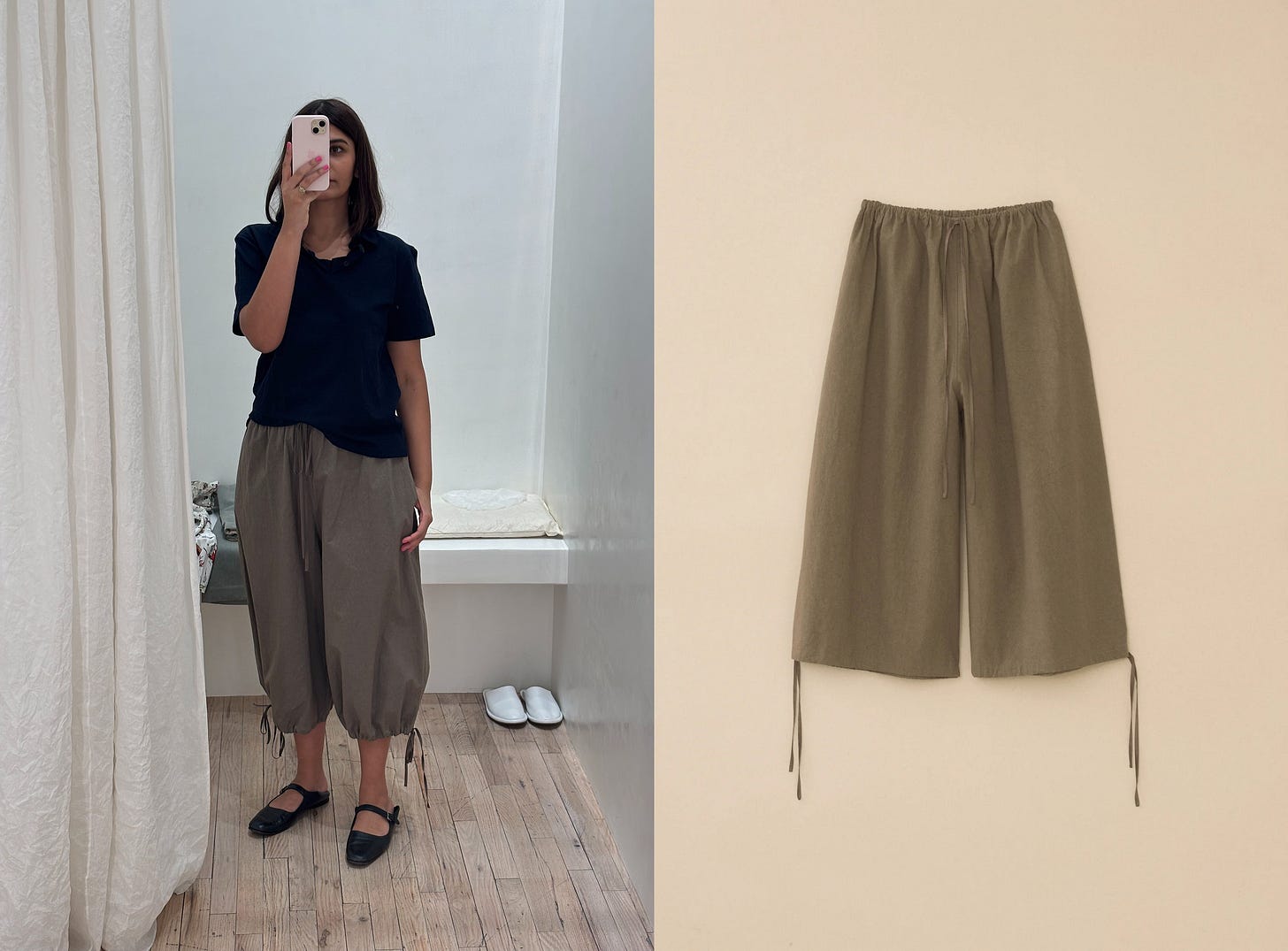

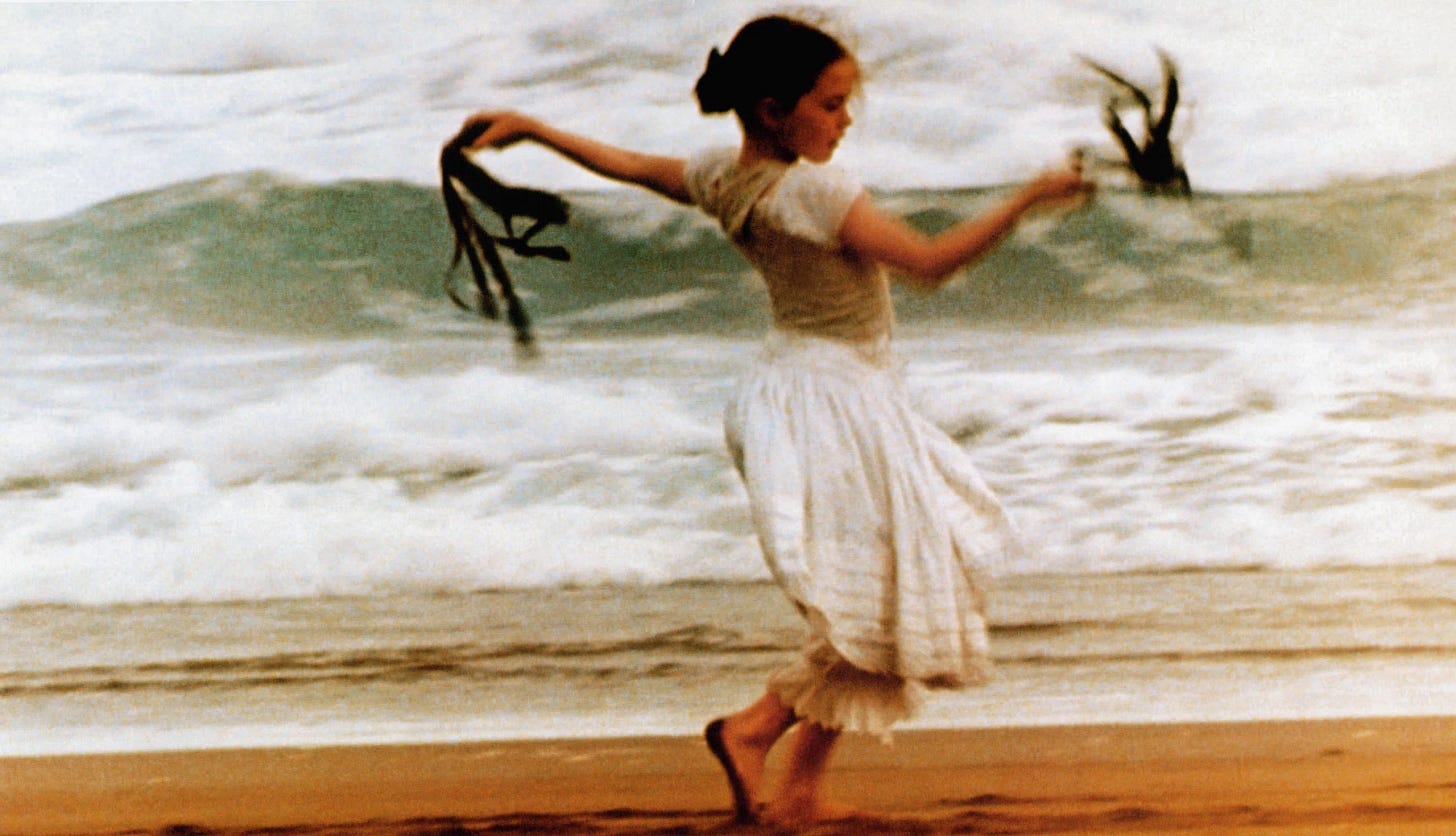
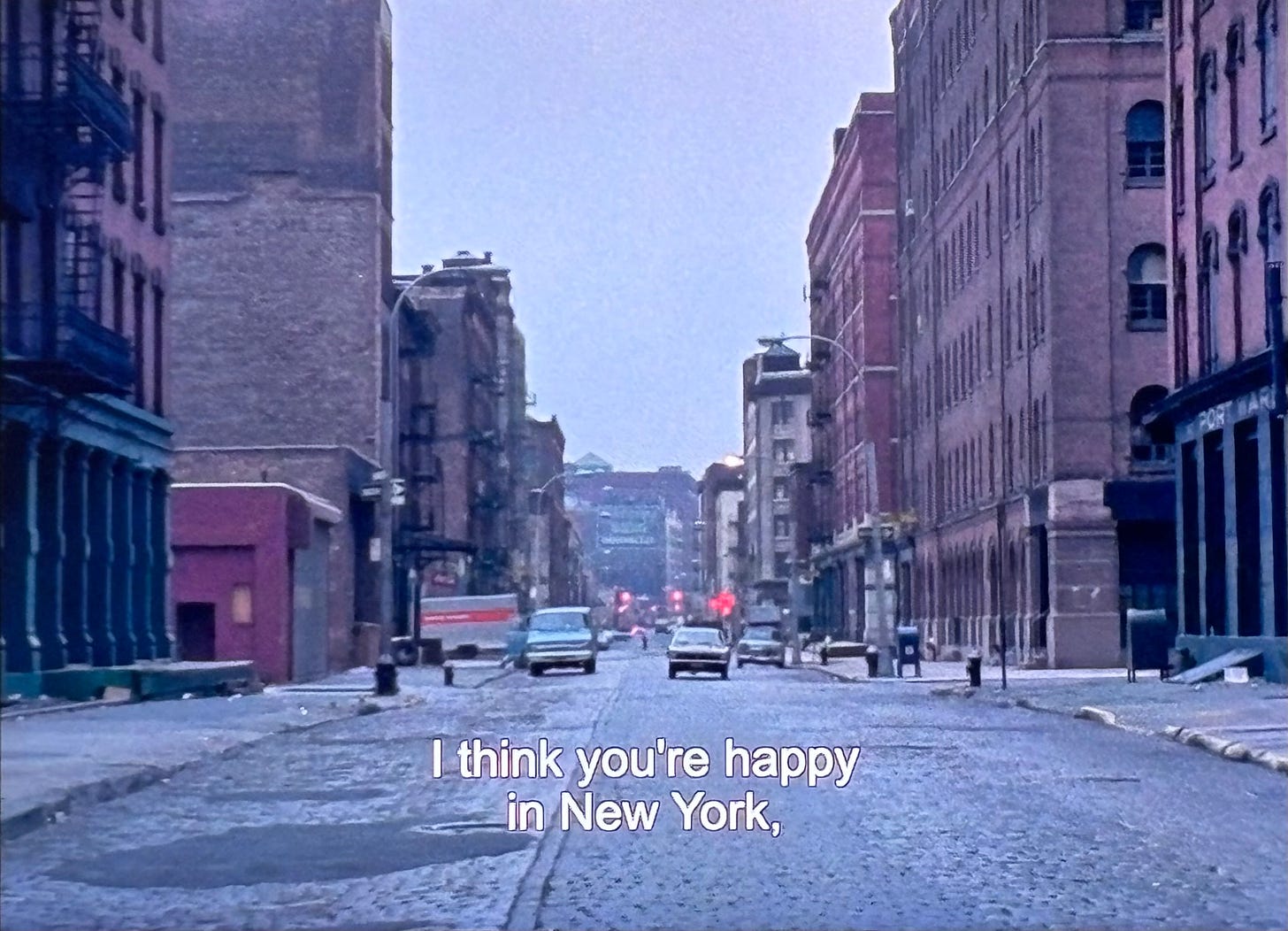
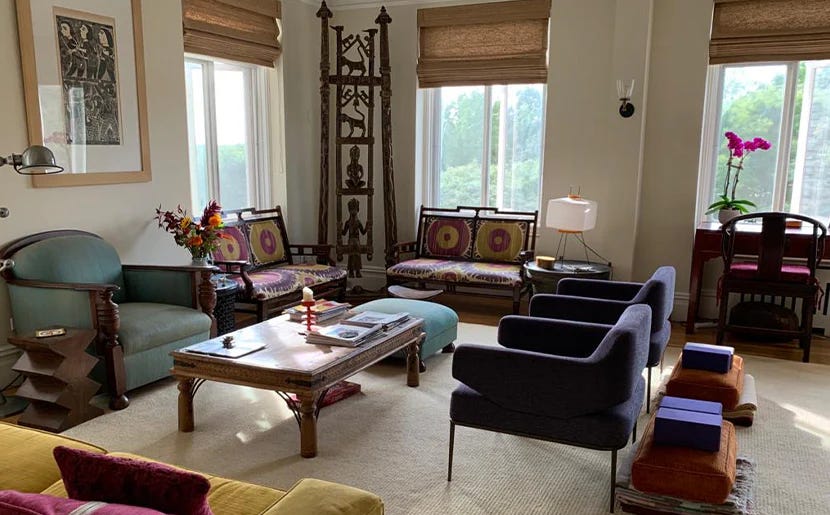
I did not know Zohran's mother is Mira Nair! That's a great fun fact.
Oo the purple yoga blocks behind the purple arm chairs?? I didn't know you could do that!